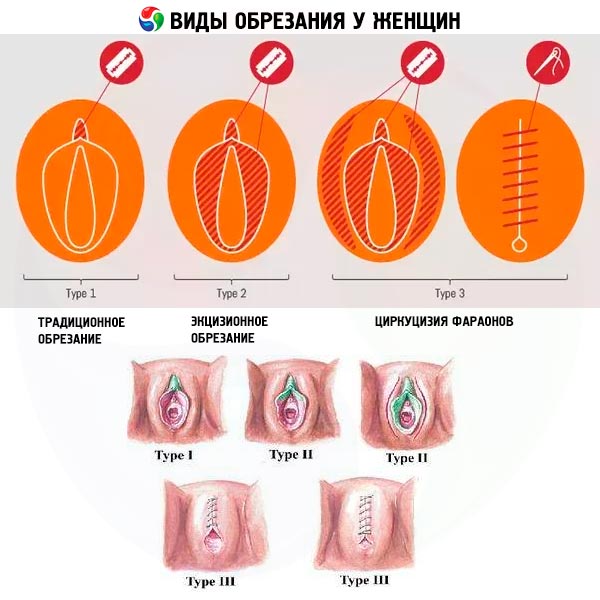Medical expert of the article
New publications
Female circumcision
Last reviewed: 06.07.2025

All iLive content is medically reviewed or fact checked to ensure as much factual accuracy as possible.
We have strict sourcing guidelines and only link to reputable media sites, academic research institutions and, whenever possible, medically peer reviewed studies. Note that the numbers in parentheses ([1], [2], etc.) are clickable links to these studies.
If you feel that any of our content is inaccurate, out-of-date, or otherwise questionable, please select it and press Ctrl + Enter.
Despite widespread condemnation of female circumcision, the practice continues in many countries, with prevalence rates of female circumcision ranging from less than 1% to 99%.
Female circumcision is practiced on all continents among various ethnic and religious groups, including Christians, Muslims, Jews, and some indigenous (African) religions.
There are at least 100 million women worldwide who have undergone circumcision.
Indications for circumcision in women
There are no medical indications for female circumcision. In many cultures, female circumcision is viewed as a rite of passage, after which a teenage girl is considered a woman. Female circumcision is viewed as a procedure that prevents immoral behavior, gives the right to marry, makes sexual intercourse more enjoyable for men, and maintains cleanliness. In reality, the operation symbolizes social control over sexual satisfaction (removal of the clitoris) and reproductive function (suturing the genital slit) of women.
Technique of female circumcision
The following types of circumcision in women are distinguished:
- Traditional circumcision (circuciation) - Excision of the foreskin of the clitoris, but usually results in the removal of the clitoris.
- Excisional circumcision (cutting) - Removal of the clitoris, clitoral foreskin and labia minora.
- Pharaonic Circuciation - Removal of the clitoris, labia minora, incisions of the labia majora and suturing of the entrance to the vaginal vestibule. Can be divided into type III and type IV depending on the size of the openings left.

Sunnah circumcision (an Arabic word meaning "traditional") is a less mutilating procedure that involves removing only the foreskin of the clitoris. This procedure is considered analogous to male circumcision; however, it invariably results in severe damage and/or amputation of the clitoris.
Female circumcision is usually performed by non-medical personnel, usually without anesthesia and using non-sterile instruments. Hemostasis is achieved in a variety of ways, including rough suturing, wearing tight clothing, or applying cow excrement or mud. To facilitate healing, the girl's legs are sometimes tied.
Complications of female circumcision
Complications (early, late and during childbirth).
Early complications:
- Bleeding (0.5-2%)
- Shock (0-2%)
- Severe pain (>90%)
- Acute urinary retention (0.7-10%)
- Trauma to adjacent organs (urethra, anus)
- Infection (7-10%), including septicemia, tetanus, gangrene, abscess, ulceration.
Late complications:
- Formation of keloid scar (14%)
- Implantation cysts (0-1.5%)
- Recurrent urinary tract infections (1-4%)
- Vaginal stones (rare)
- Chronic inflammatory process in the pelvis (4-13%)
- Anxiety disorders and depression
- Dysmenorrhea, dyspareunia
- Infertility (?)
- Decreased sexual satisfaction
Obstetric complications:
- Prolongation of the second stage of labor (14%)
- Increased incidence of postpartum hemorrhage (5-6%)
- Increased (40-100%) frequency of episiotomies, especially anterior
- Increased risk of intrapartum fetal death
- Increased incidence of rectovaginal and urethrovaginal fistulas


 [
[